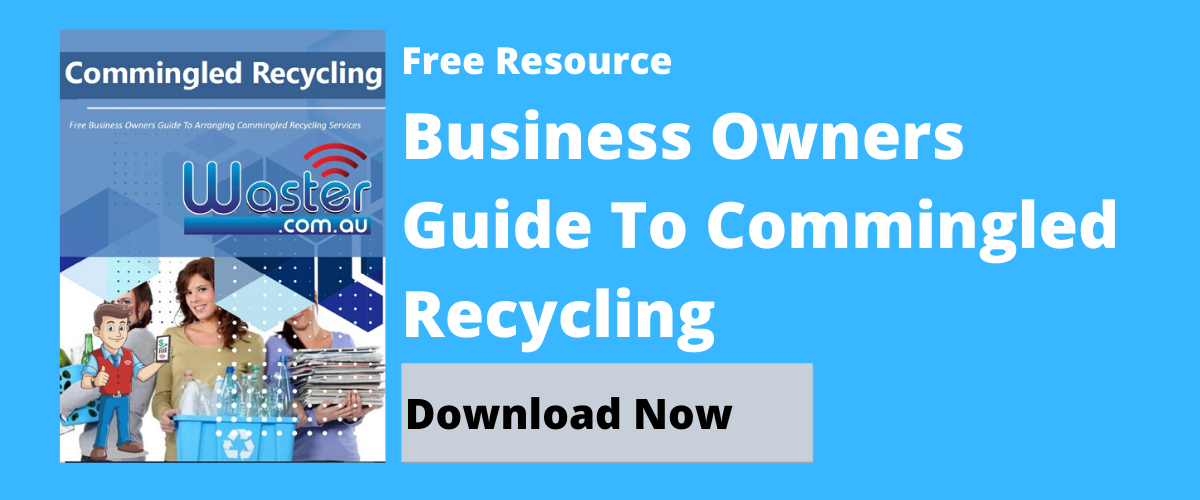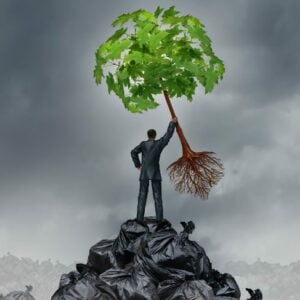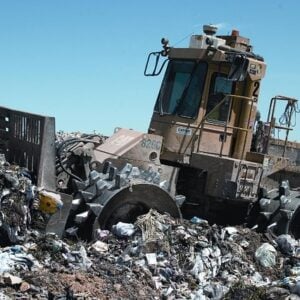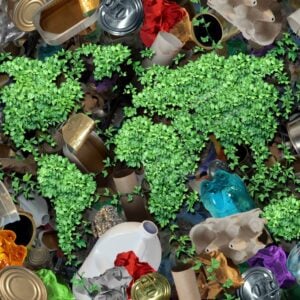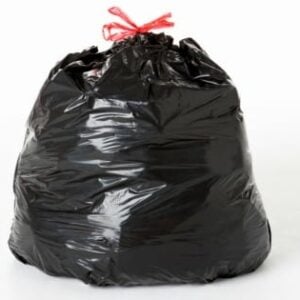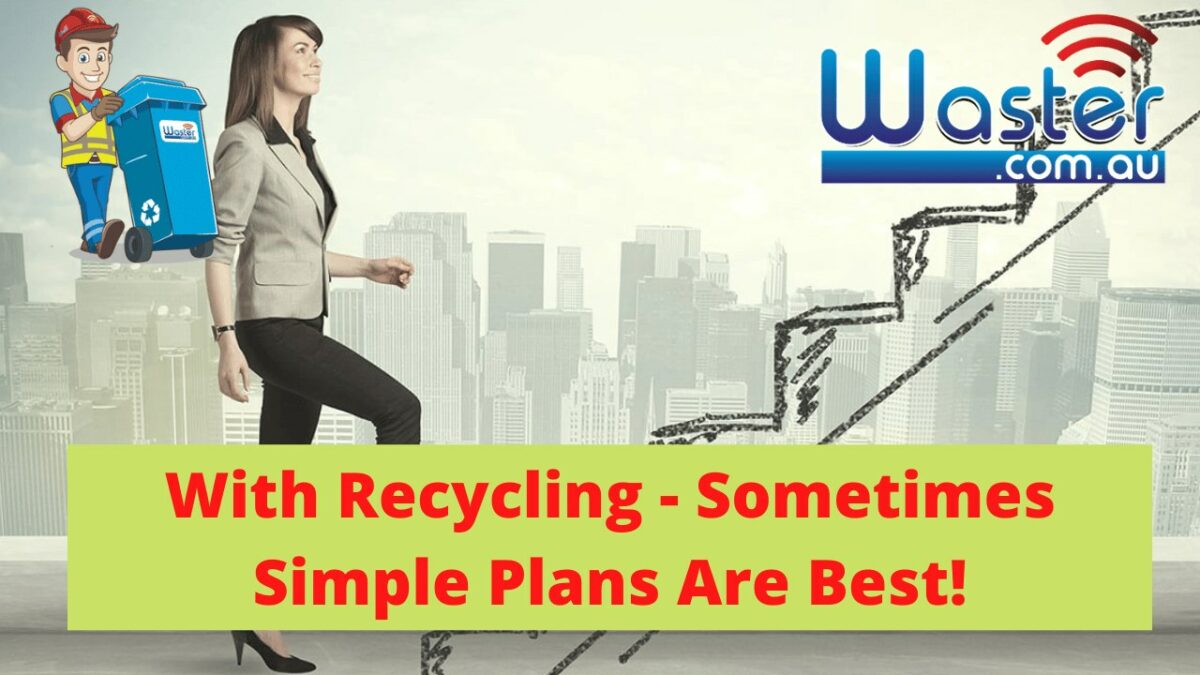
Why Recycling Plans Need Small Steps ♻️ Podcast Ep. 20 Don’t Be A Waster
Why Recycling Plans Need Small Steps ♻️ Podcast Ep. 20 Don’t Be A Waster
In this episode of our podcast on all things recycling – we discuss the importance of starting off small steps from recycling plans, so read on to learn more.
Listen on Apple Podcasts Listen on Spotify Listen on Google Podcasts Listen on Stitcher Listen on Amazon Music
Transcript – Why Recycling Plans Need Small Steps
Hello and welcome to another edition of our podcast recycle don’t be a waster in today’s episode I suppose I think we’re going to talk a little bit about sensible first steps sensible steps in achieving achieving objectives you know not saying the people don’t shoot for the sky not saying that by any means but at the same time it’s better to you know get halfway there than to not get anywhere at all due to being overly optimistic and I suppose the example I want to we’re going to use an example of a shopping centre food court and the recycling systems in place there because I know that it does annoy in many ways it annoys people when you know you see a lot of things being thrown in the general waste or the red bin that in theory could be recycled.

But I suppose I just want to use that as a as a basis for discussing a sensible waste management plan and what you know maybe some of the rationale behind that you know so I think what is a waste management plan or a recycling plan we work with a lot of companies on these and how you can go from where you are today which could be let’s assume everything’s going into gel waste and how you can as a business as a group of people as a school whatever it might be an office how you can move from that position to hopefully recycling much more hopefully getting close to recycling everything or achieving achieving your objectives which could be you know reducing cost.
>Download Now: Free PDF Business Owners Guide To Commingled Recycling Bin Services
Because obviously recycling is cheaper in most instances. It could be, it could be just be helping the environment or whatever it is so one thing we always say is you have to be realistic about what is achievable and realize the difficulties and work with that in mind so let’s think about the the food court so in a food court you’ll have hundreds potentially thousands of people every day sitting down taking food from various outlets fast food restaurants cafes different types… of different types of food different types of packaging no uniformity no real uniformity on the materials on what goes into items etc.
And so it’s a real mixture and then you have generally in the food and obviously certain shopping centres will be different but we’re talking in general terms here there will be certain types of bins and one thing I’ve always often noticed is that the recycling options are reasonably limited and often they are improving but often they were limited to bottles and cans and maybe just the rest was general waste even often you would not even have a cardboard bin and I suppose you know you’d ask yourself why is this because clearly you know you could put food waste into an organic waste bin you could put the glass to a glass bin you could put plastics in the plastic you could if the shops had cardboard containers they’d go into a cardboard bin and you know you could quite easily recycle a huge amount of the waste.
I’ll be honest the simple answer is that you will not achieve the objectives that you set out to get because the you know the great public Australian public is like any other population it’s a spectrum with certain people who are massively keen on recycling and will take that extra step certain people who don’t care and then obviously with any distribution curve you’ll have the people in the middle the vast majority but you’ll also have people who don’t understand people who potentially can’t read and different aspects like this.
And so you will probably almost certainly recycle less than you expect that you would and you will have a higher degree of contamination you know even in the bottles and cans people will still drop in general waste either by accident or again just due to carelessness or not caring people will drop in remainders of food etc into that bin and you will end up with a situation where potentially it’s not recyclable at all due to this the sheer contamination and so I think like I think it is sensible that you go with you should certainly have a co-mingled recycling in that instance and nearly all do not everyone by any means but most will have a co-mingle there for the bottles and cans and even just I think it’s limited to the bottles and cans just to make it super clear for people that it’s plastic bottles you know coke bottles whatever it is and it is the – and then it’s the cans you know metal aluminium cans because then you’re confident that that will be recycled like unfortunately then a huge amount of waste is still going into landfill in the general waste category.
And it’s how do you know I think we’ve talked about wish cycling on previous episodes you could in theory put in place five different bins you could have infinite variations but the reality is that a lot of it will just get contaminated by the public because there’s no responsibility there’s no direct line of responsibility from the person who dumps the waste to the person who I suppose fundamentally has to pay for that waste being processed if you know in a private business in a private house whatever it is there’s a direct line of responsibility and you can you can say who and because of that then you’ll get better outcomes if you’re running your own business if it’s in a warehouse or whatever business type it is you can control that you can have education for the staff you can you know to some extent police it to use it to use that word which might have negative, you know… you’re policing people’s behaviour a little bit but it is it’s you know there’s the card in the stick approach I suppose and…
Obviously, the card is a much more method of doing it but to get the outcome that you want you will need to have some systems in place to reach that that recycling level that you need you know so what does this really mean to us I suppose another example just before I move on would be like pop concerts or large events you know comedy shows music festivals outdoor cinemas those sort of things often at those you will have fewer you know you might be given some general waste bins and then you’d be given a fewer number of commingle bins and often it is you recycle less than you think you will again because people just will dump it wherever they can often the bins might be overflowing I think we’ve all been at events where bins are overflowing there aren’t enough bins etc. and people will just dispose of waste realistically wherever they can.
And you’ll see this at events such as you know any outdoor event in Australia such as Australia day you know those sort of those sort of events where you have large amounts of people congregating and they’re doing the right thing they’re trying not to litter or spoil the environment but at the same time then this leads to low recycling percentages and it just basically becomes a hygiene issue getting rid of that waste and it will be going to landfill.
So I suppose the lesson here is you have to take logical sensible steps let’s not wish cycle lets you know you have to think about how we’re implementing steps along the along the line you know do the easiest ones first and this is in a business we always say do cardboard first cardboard is I think everybody understands what cardboard is a cardboard box you know put that in you know flatten it it’s large put it in the blue bin and that will immediately save you money once that’s being successful then you can implement the next step which may, of course, be you know in nearly all cases the co-mingle bin but there could also with that be a little bit more you’ll risk higher risk of contamination you’ll have higher risks of misunderstanding and of course this could be this is even more pertinent in the situation of a food court where you may have tourism.
You may have people who English may not be their first language you may have you know obviously all ages and in society everybody is in that environment so you have all different views education levels and approaches backgrounds you know focus on recycling you know prioritization of it so it’s I suppose you have to work on the sensible most sensible way of doing it and over time we and I think we are getting better at this we’re getting better at packaging the recycling the bins like you know colour coding them with national colour codes so people are subliminal you know in the back of their mind subconsciously almost they know which bin to use.
And I think all these approaches are becoming more beneficial you’ll even see the I suppose the cavity in the bin that you put the waste into it can often be shaped so the drinks one could be shipped in a circle so it suggests even to you that there should be a drinks container and those sort of things are effective and they do work and I think over time you’ll be seeing more and more of this sort of stuff that you know I suppose you go for you have to have hated from every side you have to hit it from education colour coding posters branding simple wording, you know, I’ll be honest like I I think I was at I think it used to be Guzman and Gomez, I think, used to have I actually did find their some of their bins the branding on their bins for commingle quite confusing.
And because it I think it used to say stuff like aluminium and drink containers or something along those lines quite long words and rather than saying commingle recycling which people will be used to seeing and I think they’ve changed that in recent times but that was at one point in time I felt that was a little bit confusing and I think it’s you have to keep things uniform it has to be clear it has to be probably wording so let’s say what should these bins have they should have standard colours you know blue whatever it is blue red the yellow ones the people know don’t mix them up don’t mix them around you should potentially have pictures of what can go in if it’s bottles and cans pop pictures of bottles and cans there and be super clear because you know even if you’re not wish cycling the person putting in place this system a lot of people will be will innately want to recycle more, so they’ll be thinking oh will this coffee cup that’s a drinks container that can go in here or this you know plastic container that can go in there.
And it’s, you know, everyone has their own view if it’s not super clear people will again you have a spectrum of you know people not exactly agreeing or getting right what you think it should be so I think it’s you know I think this is the psychological aspect of recycling it’s the psychological and sociological aspect of how we implement a recycling plan what things we need to consider and at the end of the day what we’re doing is we’re dealing with large numbers of people and when you’re dealing with large numbers of people it’s you have to deal and accept that there is that spectrum and then you have to tailor your I suppose tailor your expectations you know tell your objectives until you’re planned to match so I think I’ll leave it there today I think this is a very interesting topic you know almost certainly we’ll come back to discuss many aspects of this you know the social aspects of it the education aspects even the colour coding I will discuss this again in a in a later episode but I think I’ll leave it there today so I’ll say yeah Recycle: don’t be a waster!
Leave a Reply Cancel reply

Product categories
Most Popular Posts
-
Commercial Waste Management Services: Reduce Waste Collection Costs! 🚍
-
Medical Waste Disposal: Everything You Need To Find Out In 2024! 💉
-
Rubbish Removal Sydney 2024: Better Bin Collections For Business ✅
-
Clinical Waste Disposal 2024: What To Know About Business Clinical Waste ⚕️
-
Secure Document Destruction 2024: All About Security Bins Shredding 🔒
-
Free Cardboard Recycling 2024: Can I Get Free Cardboard Collection? 📦
-
Confidential Paper Disposal Bins 2024: What You Need To Know About Shredding! 🔒
-
Recycling Bins Australia 2024: Recycling Can Boost Your Profits! ♲
-
Commercial Wheelie Bin Collection: What Businesses Need To Know In 2024 🗑️
-
Commingled Recycling 2024: Why Commingled Bin Is Key To Recycling 🍾

